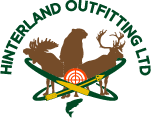Black Bear
We have one of the highest black bear densities in Newfoundland, mainly because some of the areas we now do our bear hunting was never hunted previously. The black bears in NL are large, mainly through lack of hunting pressure and weights in excess of 700 lb have been recorded. The number of black bear currently estimated in Newfoundland is at an all time high according to our Wildlife Department. They also suggest that the number of fully mature black bears is also high as it is this part of this population that now account for the demise of about 25-40% of all Woodland Caribou calves born each year on the island. These two factors make us a destination highly favorable to harvest true trophy bruins.
Biologists believe our black bear have a genetic predisposition to large body size simply because they have evolved over time without succumbing to early mortality and thus lived and grew beyond normal expectations.
We provide separate stands for both rifle and bow bear hunters. The spring black bear hunt is conducted using a combination of sturdy well built, tree stands and ground blinds that are camouflaged each spring before we begin baiting. Forty five gallon drums are used to put bait in. Bear hunting is best during late May or during the month of June as these animals require several weeks feeding on "soft" foods such as grasses before they begin eating solid foods. More important spring weather conditions that govern access throughout our hunting area varies greatly from year to year so hunting before this period can be unpredictable. We ensure that baiting is done well in advance of the arrival of any guest to ensure that stands are active so travel conditions must warrant this. We use a variety of foods for baiting purposes. We check our baiting stations every second day until they are hit, then we check them every day and add bait accordingly. A yearly actively log of each bait station is kept.
Weather during May and June is seasonal where day temperatures range in the 50 - 60's F. Black flies are more prevalent during June and bug netting can be required. Bear hunters have the opportunity to accompany his guide during baiting, which occurs in the morning or take the opportunity to do some trout fishing. Hunters are placed on the stands around 4:00 PM each evening. They can also sit on the stand all day if they choose.
Fall black bear hunting can be done over bait or as a chance encounter add on to any moose or caribou hunt. Required things to bring should include bug netting, flashlight, fishing rod, rain suit, knee high rubber boots and or hiking boots and warm clothing, Scent Lok clothing is definitely an asset and is suggested as part of your daily attire.
Spring bear season now opens on May 1st and ends July 15th each year. Fall season starts on the second Saturday in September for rifle hunters and two weeks prior for bow hunters. It ends the second Sunday in November.
Government of Newfoundland Labrador - Our Wildlife
Hinterland Who's Who



